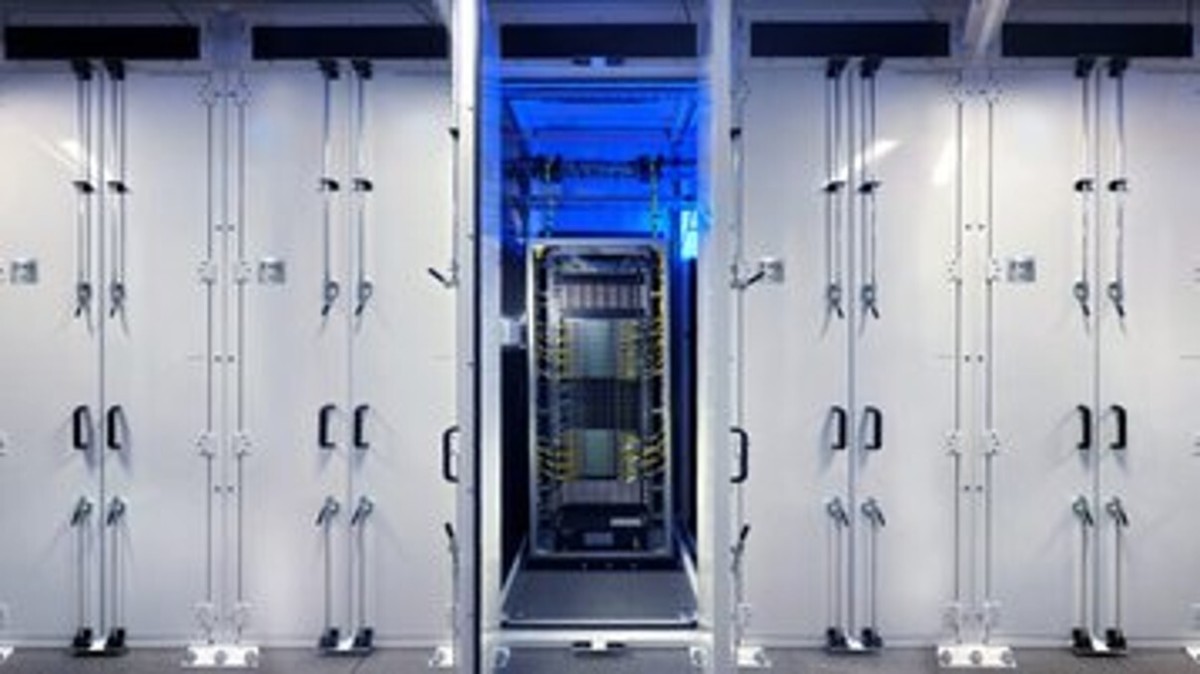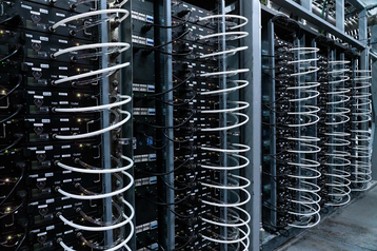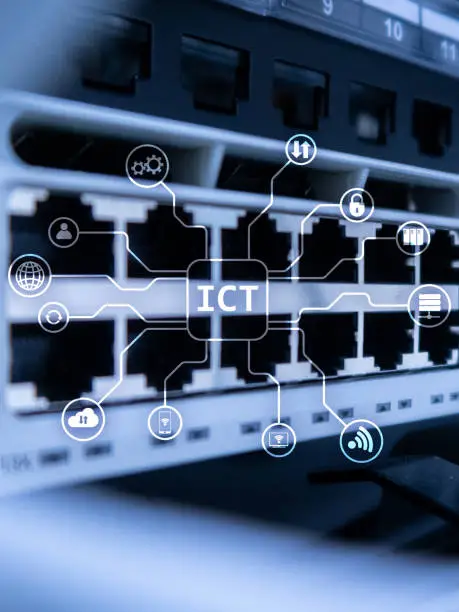BLOG
Supermicro Systems Certified by Intel for an Immersion Cooling Solution
Super Micro Computer, Inc. (SMCI), a Total IT Solution Provider for AI/ML, HPC, Cloud, Storage, and 5G/Edge, is announcing an industry immersion cooling certification for Supermicro's BigTwin Server with 4th and 5th Gen Intel Xeon Scalable Processors from Intel. With rigorous testing, the Supermicro server, in combination with a defined liquid and immersion tank, is quality/performance tested and is now recognized as a certified immersion server. In addition, the Supermicro BigTwin system has passed thorough testing as specified by the Open Compute Project (OCP) specification for material compatibility for immersion cooling.
Supermicro immersion-certified servers can significantly lower Power Usage Effectiveness (PUE) by leveraging advanced immersion cooling technology that eliminates the need for traditional air-based cooling systems.
By submerging factory built high-density, fanless servers directly in dielectric fluid, heat dissipates much more efficiently than with air, reducing the energy required for cooling solutions like CRAC and CRAH units.
This approach not only minimizes cooling overhead but also allows denser compute configurations without increasing thermal load. Furthermore, removing internal server fans decreases overall IT equipment power consumption, which improves the Power Usage Effectiveness (PUE).
Consequently, data centers using Supermicro immersion servers are capable of achieving PUE values close to 1.05 or lower, significantly reducing energy costs and environmental impact for the entire data center.
Utilizing Supermicro's BigTwin immersion servers alongside Intel's Advanced Data Center Development Laboratory (ADDL) immersion cooling technology involves submerging server components in a thermally conductive dielectric fluid. This method effectively dissipates heat, enabling enhanced performance and reduced energy consumption compared to traditional air cooling. Supermicro's BigTwin servers have shown reliability within the OCP specifications and allow data centers to achieve improved thermal management and operational efficiency.

Antifreeze in liquid cooling
Liquid cooling has emerged as the data center industry's go-to for high-density servers and advanced workloads.
The type of liquid used varies from system to system, but with a much higher heat capacity than any other liquid and impressive thermal conductivity, water makes for an excellent coolant.
What is the point of antifreeze?
Antifreeze stops the water in the primary loop of a cooling system from freezing should the outdoor temperature become too low. It also plays an important role if servers stop working, preventing water from freezing in the absence of the heat usually provided by the hardware.
In a very cold environment, the percentage of glycol may reach up to 50 percent. In Canada, says Huang, operators are using percentages of up to 40 percent to prevent liquid cooling systems from freezing over. Concentrations aside, there are also different varieties of antifreeze.
The first is propylene glycol (PG), and the second is ethylene glycol (EG). While EG is much more effective when it comes to cooling, it is a toxic chemical with many potentially dangerous side effects related to exposure. PG is less toxic and more environmentally friendly, but far less efficient as a coolant.
Cold and broken
Cooling is a complicated equation, Huang explains, and depends on the chip, the density, and the system as a whole. Cold climates may be branded as a big advantage for the cooling world, says Huang, but they make liquid cooling systems susceptible to freezing.
An alternative to antifreeze
As it stands, Huang believes there is no emerging alternative to antifreeze. As long as water remains the best heat-conductive fluid and liquid cooling is necessary in the data center, antifreeze is the only solution to preventing unwanted frosty surprises.

Dell ships first Nvidia GB300 NVL72 to CoreWeave
Dell has shipped the first Nvidia GB300 NVL72 rack-scale solution to CoreWeave.
CoreWeave plans to bring its GB300 servers online throughout 2025, with this initial rack deployment set to be “fully assembled, tested, and deployed in the US,” Dell said.
The Nvidia GB300 NVL72 rack-scale solution connects 72 Blackwell Ultra GPUs and 36 Arm Neoverse-based Nvidia Grace CPUs in a single liquid-cooled rack, which the company claims offers 1.5x more AI performance than the Nvidia GB200 NVL72.
Nvidia’s Blackwell Ultra chip, first unveiled in March at Nvidia’s annual GTC conference, combines two reticle-sized GPUs, has 15 petaflops of FP4 performance, and 288GB of HBM3e.
CoreWeave was founded in 2017 as a cryptomining firm, but has become one of the biggest players in AI infrastructure after pivoting to offer access to GPUs.
The company began trading on the Nasdaq stock exchange on March 28, offering shares at $40 each and giving it the potential to raise up to $1.5bn with the IPO - $4bn less than previously mooted for the offering.
Beyond the detail that the rack will be deployed in the US, no information about where CoreWeave will house its Nvidia GB300 NVL72 servers has been disclosed. In March 2025, the company announced it had selected a Bulk Infrastructure data center in Norway to host an Nvidia GB200 NVL72 cluster deployment.

Hut 8 launches cryptomine data center in Texas
Cryptomining and HPC data center firm Hut 8 Corp. has launched a Bitcoin mining data center in Texas.
The company this week announced the initial energization of its Vega campus.
Hut 8 acquired the site in the Texas Panhandle in July 2024. The facility spans 162,000 sq ft (15,050 sqm) and will offer 205MW of capacity at full energization.
Powered behind-the-meter by a wind farm and front-of-the-meter by an ERCOT grid connection, Vega features a proprietary, rack-based, direct-to-chip liquid cooling system designed in-house by Hut 8, and is able to support densities up to 180kW per rack. Some 96 custom-designed cooling modules circulate 120,000 gallons of glycol-water solution through a closed-loop, according to the company.
Bitmain is the client for the full ~15 EH/s deployment at Vega under an ASIC colocation agreement.
Based on ERCOT forward energy prices, the agreement is expected to generate between $110 million and $120 million in annualized revenue upon full energization, subject to factors including ERCOT energy pricing and facility uptime.
The agreement also includes a purchase option that allows Hut 8 to acquire all or part of the hosted fleet in up to three tranches at a fixed price, exercisable within six months of each tranche’s energization, turning the facility into self-mining capacity for its Bitcoin mining subsidiary, American Bitcoin Corp.

Elon Musk's xAI raises $10bn in debt and equity for data center development
Elon Musk's xAI has raised a total of $10 billion in debt and equity, partly to fund the development of more data center capacity.
Revealed in a post to X by Morgan Stanley, the funding is comprised of $5bn in secured notes and term loans, along with $5bn in "strategy equity investment.
xAI operates a data center in Memphis, Tennessee. The facility was launched in July 2024, with an initial capacity of 150MW. However, last October, it was reported that the capacity at the data center was set to double, following the installation of an additional 100,000 Nvidia Hopper GPUs to the cluster. It is located on an industrial park at Paul Lowry Road, in southwest Memphis.
The company is facing a lawsuit at the site as a result of the increase in power capacity, for which the company allegedly did not obtain the necessary permits to legally operate the 26 natural gas turbines that were installed on the site to power its operations.
A second data center in Memphis is also in the works following the purchase of a one million sq ft (92,903 sqm) site on Tulane Road.
It is unclear which - if either - data center Morgan Stanley refers to in its post stating the investment will be used to develop "one of the world's largest data centers." DCD has contacted xAI for more information.
xAI was recently revealed to be using Oracle's compute capacity to train its next-generation Grok models and to run inference workloads.

University of Texas to get $3m data center
The University of Texas is looking to deploy a new data center at its College of Education building.
In a project published to the Texas Department of Licensing and Regulation, the data center will be housed in the education building at 500 W University Avenue in El Paso, Texas.
The data center will span 4,568 sq ft (424.4 sqm) and is estimated to cost around $3 million.
The University of Texas has several campuses spread across Texas, with various data centers on site. The El Paso campus has an existing data center on the 3rd floor between the Engineering and Classroom buildings, also at 500 W University Avenue, with a server room spanning 1,448 sq ft (134.5 sqm).
The Austin campus houses the Texas Advanced Computing Center, which is home to a 600 Nvidia H100-powered generative AI cluster and the Horizon supercomputer. It also has a 26,000 sq ft (2,415 sqm) Tier III data center with 1.44MW of power capacity, according to a DPR Construction project page.
In addition to having on-site campuses, the University of Texas has been involved in several research projects targeting the data center industry. In November 2024, UT researchers developed a new “thermal interface material” that could organically remove heat from high-powered electronic devices, which they claim could reduce or even eliminate the need for extensive cooling at data centers.

El Salvador becomes first country to receive sovereign quota of Nvidia B300 chips
El Salvador has made the world’s first sovereign purchase of Nvidia B300 GPUs.
According to a post from the country’s National Bitcoin Office (ONBTC) on social media platform X, the Blackwell Ultra chips will be housed at El Salvador’s National AI Lab.
The purchase has been facilitated by Hydra Host, a company that provides compute infrastructure to data centers. Nvidia’s Blackwell Ultra chip combines two reticle-sized GPUs, has 15 petaflops of FP4 performance, and 288GB of HBM3e.
In June 2025, El Salvador launched the National Agency for Artificial Intelligence (ANIA), a state-run AI agency that will oversee the promotion and regulation of AI in the country.
The government of El Salvador has also been working with the Trump administration to jail more than 250 Venezuelan migrants who have been forcibly removed from the US, as well as 29-year-old Kilmar Ábrego García, who was taken to the Cecot mega-prison in March as a result of an "administrative error” from the Trump administration.

Malaysia imposes power tariffs for data centers
Data center operators in Malaysia are reassessing their power options following the implementation of power tariffs in the Southeast Asian country.
Data center operators in Malaysia are reassessing their power options following the implementation of power tariffs in the Southeast Asian country.
Data centers with a capacity of more than 100MW will fall into the ultra-high voltage category, which will expose them to the highest tariffs. As a result, these facilities could face an additional $15 million to $20 million in expenditure per annum.
In addition, a further monthly surcharge could also be imposed that would reflect changes in fuel prices and foreign exchange. The Malaysian government has contended that the tariff hikes are necessary in order to boost social spending.
To mitigate the impacts of the tariffs, Equinix said that it is considering alternative energy sources to mitigate the impact of the tariffs.
Several operators in the country have turned to onsite renewables to supplement their energy use. Last November, AirTrunk partnered with Pekat Solar to deploy 1MW of rooftop solar at its JHB1 data center campus in Johor Bahru, Malaysia.
Malaysia has become one of the premier data center markets in the APAC region, with power demand from the sector expected to surge to 21 percent by 2027 from seven percent in 2022, according to a report by Bain & Co.
The biggest markets are in Kuala Lumpur, Cyberjaya, and Johor Bahru. Operators in the country include PDG, AirTrunk, Equinix, Keppel, ChinData's Bridge DC, STT GDC, and Yondr.

Leave A Reply
LOGO
This stunning beach house property is a true oasis, nestled in a serene coastal community with direct access to the beach.
Opening Hours
Monday - Friday : 9AM to 5PM
Sunday: Closed
Closed during holidays
Contact
+18888888888
hezuo@eyingbao.com123 West Street, Melbourne Victoria 3000 Australia



